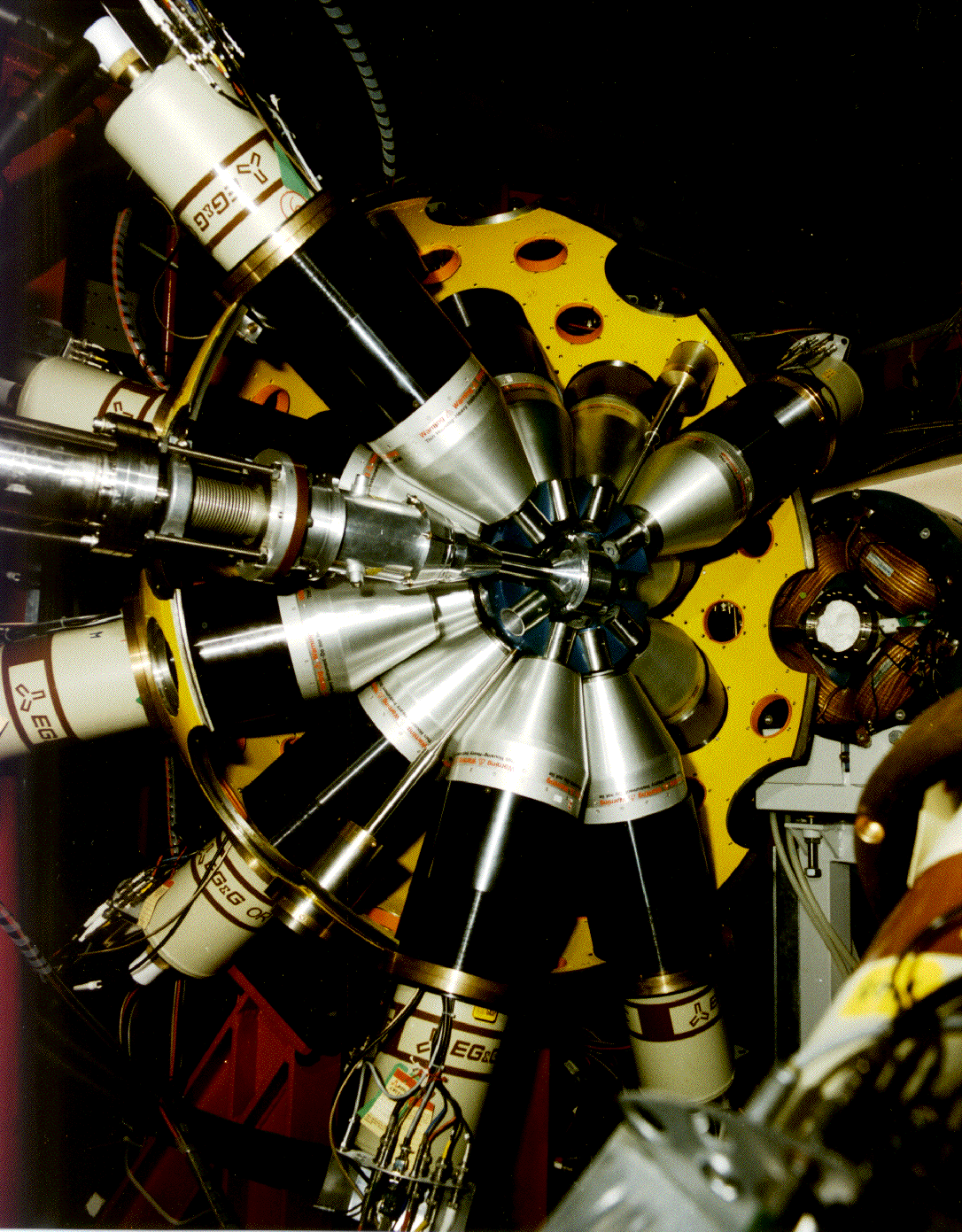Configuration II (note in the
figure the Köln Plunger)
(note in the
figure the Köln Plunger)
There are experimental
situations where the most important feature of an array is not the detection limit
but instead the total efficiency.
This is the case, for example,
when measuring lifetimes (both with the DSAM or the Recoil Distance Plunger Technique)
or Transient Field g-factor measurements, as the precision of the measurement is
determined mainly by the collected statistics.
In many thick target experiments,
where the line shape is not determined by the Doppler effect, the gain in efficiency
is also desired.
For these cases the original
GASP project foresaw the so called configuration 2 (C2). In this configuration
the 80 inner ball BGO detectors are removed.
The collimator function
of the inner BGO ball is obtained with a Pb shield made of two hemispheres smaller
in diameter (19 cm) having the same symmetry as the inner ball. This shield has been
made in collaboration with the Institut für Kernphysik, Köln in Germany.
In this way the CS germanium
systems are moved nearer to the target. The first implementation of C2 reduce the
target-germanium distance from 27 cm to about 20 cm for the 28 detectors in the hexagonal
positions and from 27 cm to 24 cm for the 12 in pentagonal ones.
The total photopeak efficiency
at 1.33 MeV is thereby almost doubled from the standard 3% up to 5.8%.
C2 is operational
since 1995.
 (note in the
figure the Köln Plunger)
(note in the
figure the Köln Plunger) (note in the
figure the Köln Plunger)
(note in the
figure the Köln Plunger)